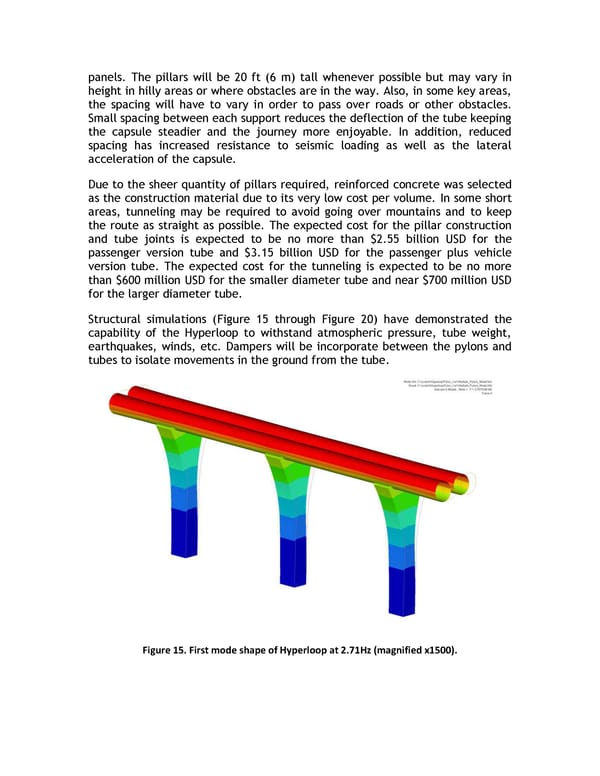panels. The pillars will be 20 ft (6 m) tall whenever possible but may vary in height in hilly areas or where obstacles are in the way. Also, in some key areas, the spacing will have to vary in order to pass over roads or other obstacles. Small spacing between each support reduces the deflection of the tube keeping the capsule steadier and the journey more enjoyable. In addition, reduced spacing has increased resistance to seismic loading as well as the lateral acceleration of the capsule. Due to the sheer quantity of pillars required, reinforced concrete was selected as the construction material due to its very low cost per volume. In some short areas, tunneling may be required to avoid going over mountains and to keep the route as straight as possible. The expected cost for the pillar construction and tube joints is expected to be no more than $2.55 billion USD for the passenger version tube and $3.15 billion USD for the passenger plus vehicle version tube. The expected cost for the tunneling is expected to be no more than $600 million USD for the smaller diameter tube and near $700 million USD for the larger diameter tube. Structural simulations (Figure 15 through Figure 20) have demonstrated the capability of the Hyperloop to withstand atmospheric pressure, tube weight, earthquakes, winds, etc. Dampers will be incorporate between the pylons and tubes to isolate movements in the ground from the tube. Figure 15. First mode shape of Hyperloop at 2.71Hz (magnified x1500).
 Hyperloop Alpha Page 27 Page 29
Hyperloop Alpha Page 27 Page 29